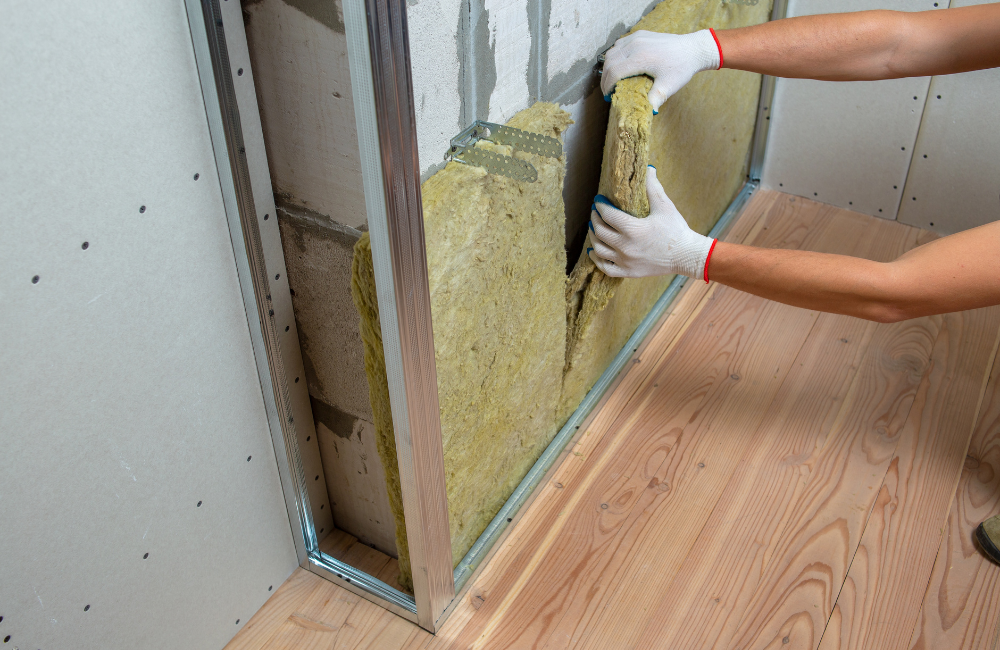Thermal insulation represents one of the most relevant innovations in the search for more efficient and sustainable homes. Improving insulation in homes not only optimizes energy efficiency, but also contributes significantly to environmental sustainability.
The latest innovations in the field of thermal insulation are making a difference in how we build and renovate our homes. Technologies such as ecological insulation make it possible to reduce energy consumption and polluting emissions effectively and economically. This approach not only benefits the environment, but also the domestic economy, by reducing the costs associated with energy consumption.
The integration of cutting-edge materials and innovative techniques in thermal insulation is redefining construction standards. These solutions advance towards more efficient buildings from an energy point of view, establishing a new paradigm in sustainable construction.
Energy efficiency and environmental sustainability are central axes of modern construction, with thermal insulation being a key component to achieve these objectives. Through the implementation of innovations in this field, it is possible to achieve homes that are not only comfortable and safe, but also respectful of the environment.
What are the best insulators or alternatives?
Currently, insulating materials play a crucial role in the energy efficiency of buildings. Among the best thermal insulators are fiberglass, due to its high efficiency, and polyurethane foam or extruded polystyrene (XPS), standing out for its excellent insulation capacity. Other effective materials, although not the most prominent, include natural thermal insulators, which offer a healthy and sustainable option for construction.
In addition to these, there are multiple materials that, although they may not top the list of the best insulators, work adequately to improve energy efficiency. For example, common insulating materials, such as cork, rock wool, or recycled cotton, offer good thermal insulation properties and are considerable options for specific projects.
For floor insulation, there are several efficient options that, in addition to offering thermal insulation, add aesthetics and comfort to the home. Although materials such as parquet are popular for their beauty and durability, their insulating capacity may not be as high compared to other solutions designed specifically for insulation. However, there are materials and strategies that can significantly improve floor insulation:
- Sprayed polyurethane: This material has been used for years and can be applied under floors to provide a very effective insulating layer against heat loss. Its adaptability to different surfaces makes it ideal for a wide range of applications.
- Extruded polystyrene (XPS): It is a relatively recent material that, due to its high resistance to humidity and its good insulation capacity, XPS is an excellent option for insulating floors, especially in areas prone to humidity such as basements or bathrooms.
- Wood fiber boards: These boards offer good thermal insulation and are sustainable, as they are made from natural materials. They are an excellent option for placing under parquet or other floor coverings.
- Cork: This natural material is not only sustainable, but also provides good thermal and acoustic insulation. It can be used in sheets or rolls under floor coverings such as parquet or linoleum. Although cork has long been used in various contexts, its application as an underfloor thermal insulator is an innovative practice that takes advantage of its natural properties to offer a sustainable and effective solution in terms of thermal and acoustic insulation.
- Mineral wool or rock wool: Although most commonly used in walls and ceilings, mineral wool can also be applied to floors, especially in constructions with hollow spaces where it can be installed as insulation.
- Thermal mats and mats: Although not permanent solutions, adding layers such as thick mats or rugs can improve the thermal insulation of your floors, especially in the colder months. These options are easy to implement and can change depending on aesthetic needs or preferences.
Non-insulating materials
Regarding materials that are not insulators, it is important to mention that metals such as aluminum or copper, despite being excellent conductors of electricity and heat, lack the necessary properties to function as thermal insulators in constructions. Their high thermal conductivity makes them ineffective in maintaining or blocking heat transfer, which is essential in an effective insulator.
Each of the above options has its own advantages in terms of thermal insulation, moisture resistance, sustainability, and cost, the choice should be based on a careful evaluation of the specific needs of the buildings, personal preferences, priorities in regarding sustainability and the available budget. Properly integrating floor insulation into interior design and home renovation not only contributes to a more comfortable and healthy indoor environment, but also decreases energy consumption and therefore the environmental impact of buildings.

0 Comments